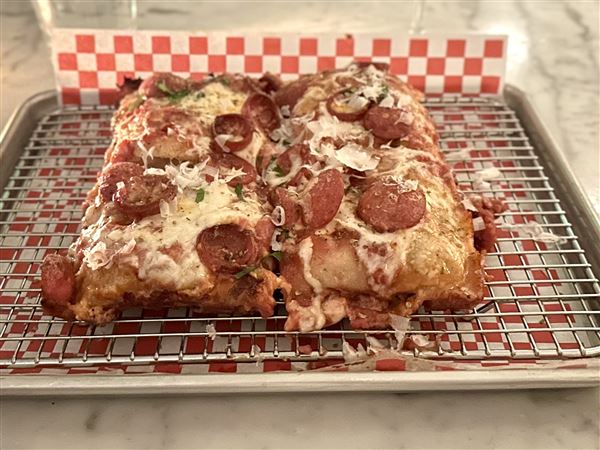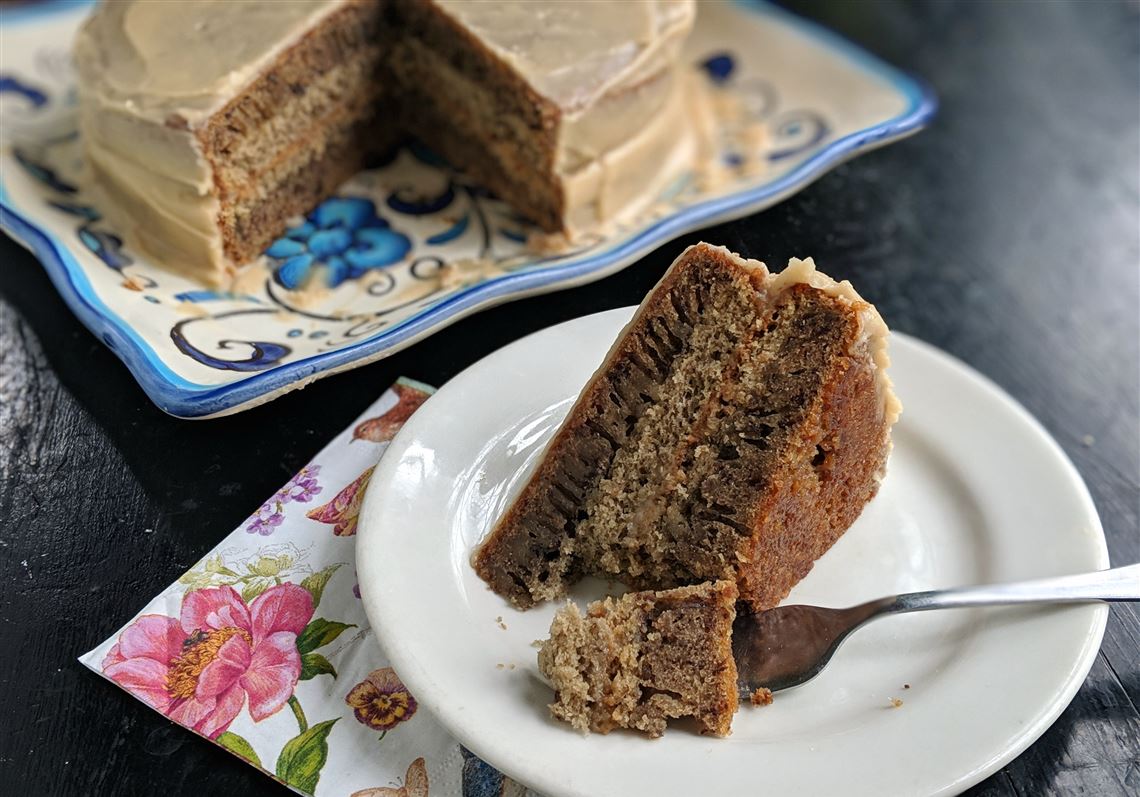If you’re like most people, you probably do one of a few things after peeling fruit or removing the skins of vegetables — add them to the compost pile, feed them to animals or throw the discards into the trash.
Very often, that’s a mistake.
Peels from avocados, melons or pineapples are just too tough to chew or digest to be reused. But the skins of many other everyday fruits and vegetables — from apples to carrots to oranges to zucchini — can add flavor, texture or crunch to food, often in unexpected ways. The best part is, you don’t even have to pay extra for it.
We all know how stale bread makes for great croutons, and that vegetable scraps enhance the flavor of stocks and broths. But did you know that orange peels can be candied in sugar water then dipped in melted chocolate for a sweet dessert? Or that boiled banana peels, when pureed, tastes great in cake? Banana peels also can be used to tenderize meat or to make vinegar.
One reason you want to cook with scraps is that it’s kind to the earth. Food scraps and yard waste together currently make up about 30 percent of what we throw away, according to the Environmental Protection Agency. Not only does that take up space in landfills but it also releases methanes, a potent greenhouse gas.
Also, fruit and vegetable peels are good for you nutritionally.
For starters, they are low in calories, sugar and fat, and they are cholesterol-free. Peels also are a rich source of rough dietary fiber, which can make you feel less hungry and feel fuller for longer. In addition, depending on the fruit or vegetable, the skin provides vitamins A, C and B-complex and minerals such as calcium, selenium and manganese. Many also are rich in anti-oxidants.
You’ll want to make sure the skin or peel is clean, of course, so wash the fruits or vegetables with water to remove any dirt or thin coat of wax.
To help change your mindset about peels and create a new mindfulness about kitchen habits, we offer two recipes that are sure to please. One is a wonderfully rich banana peel cake with brown sugar icing that will remind you of grandma’s banana bread and is just as moist. The other is candied orange peel.
I checked with members of a food and cocktail Facebook group I belong to to see what they do with kitchen scraps that typically get tossed out. Here are their suggestions:
• Use peels to infuse vodka. Cut peel from three oranges, limes or lemons in to thin strips, and scrape away any remaining pith. Place the peels into a large jar and add 3 cups vodka. Store in a dark, dry place for about 2 weeks, shaking the jar occasionally. Strain through cheesecloth, discard the peel and store in a bottle ready for use.
• Apple peels can be roasted into chips, seeped in boiling water with spice for tea or pureed into a smoothie.
• Toss potato peels and garlic cloves with oil and thyme; add salt and pepper to taste. Arrange in a single layer on a rimmed cookie sheet and roast until crisp, about 20 minutes. Toss with grated Parmesan and use to top salads and casseroles.
Gretchen McKay: gmckay@post-gazette.com, 412-263-1419 or on Twitter @gtmckay.
Banana Peel Cake With Brown Sugar Frosting
PG tested
Make sure you allow the frosting mixture to cool completely before adding the powdered sugar or it will melt, and thin the icing. I didn’t, and my frosting ended up being more of a glaze.
For cake
Peels from 2 very ripe bananas, stem and very bottom discarded
½ cup unsalted butter, softened, plus more for pan
1½ cups sugar
2 large eggs, yolks separated
½ cup buttermilk
1⅔ cups cake flour, plus more for pan
1 teaspoon baking soda
¼ teaspoon baking powder
¼ teaspoon fine grain salt
For frosting
½ cup unsalted butter
1 cup packed light brown sugar
¼ cup whole milk
1¾ to 2 cups powdered sugar, sifted
Preheat oven to 350 degrees.
Cut banana peels into 1-inch pieces and place in small saucepan with 1 cup water. Bring to boil over medium-high heat, then reduce heat and simmer for 10 minutes. Remove pan from heat and allow mixture to cool slightly. Drain banana peels, reserving 1 cup of cooking water.
Butter and flour sides of 2 8-inch round cake pans and line bottoms with parchment paper. Butter and flour pans again to coat the paper.
Transfer peels and cooking water to tall, narrow container and puree with an immersion blender or mini food processor until completely smooth.
Cream together butter and sugar in large bowl using electric mixer until pale and fluffy, 3 to 5 minutes. Add egg yolks 1 at a time, scraping down sides of bowl after each addition. Mix in banana peel mixture, then stir in buttermilk until well combined.
In medium bowl, whisk together flour, baking soda, baking powder and salt. Add to butter mixture and stir gently, until just combined.
Whisk egg whites in another bowl until soft peaks form, then gently fold into the batter. Divide batter evenly between 2 prepared pans.
Bake, rotating pans halfway through, until tops are golden and toothpick inserted comes out clean, about 25 minutes. Let cool completely.
Make frosting: Melt butter in medium saucepan over low heat, then stir in brown sugar. Cook for 2 minutes. Stir in milk, raise the heat to medium-high and cook, stirring occasionally, until mixture boils. Remove from heat and let cool to lukewarm. Gradually whisk in 1 cup powdered sugar, beating until smooth. Add remainder of sugar if frosting is too runny.
Invert 1 cake onto serving plate, and peel off parchment. Repeat for second cake. Put one layer of cake on serving platter and spread about ⅓ of frosting on top. Set the other layer on top, and spread remaining frosting over top and sides.
Makes a 2-layer cake.
— “Cooking With Scraps: Turn Your Peels, Cores, Rinds and Stems into Delicious Meals” by Lindsay-Jean Hard (Workman Publishing, October 2018)
Candied Orange Peels
PG tested
The sugar coating takes time to set so be sure to allow yourself some time for this recipe. I dipped the peels in chocolate, but that’s totally optional. Dry the candy on parchment paper — I used a metal baking rack and the chocolate stuck to the grates.
3 navel oranges
1 cup sugar, plus additional for rolling
4 ounces dark chocolate, optional
Trim ends off navel oranges, then make a slit in rinds and scoop out flesh. Score the orange skin to the white pith (without cutting all the way through), making 4 cuts lengthwise. Carefully remove each section of peel (use the orange flesh in other recipes). Slice peel into ¼-inch wide strips, and place in large pot. Cover with water
Bring to a boil, then drain in a colander. Repeat this process again.
Once orange peel has been boiled and drained twice, add the peel back to the pot with sugar and 2 cups water. Bring mixture to a boil, then reduce to a simmer for 30 minutes. Turn off the heat and let the orange peels cool in the remaining sugar (which should be very little) for 5 minutes.
Remove peels from pan and dry strips on a rack until tacky. Roll in sugar.
If dipping the ends in chocolate, melt chocolate in a double boiler over low heat. Dip ends of peels in melted chocolate, then set on a sheet of parchment to dry.
Candied orange peels can keep in an airtight container in the fridge for up to a month, or in the freezer for up to 3 months.
Makes about 40 candies.
— Adapted from Saveur.com
First Published: May 1, 2019, 11:00 a.m.


















